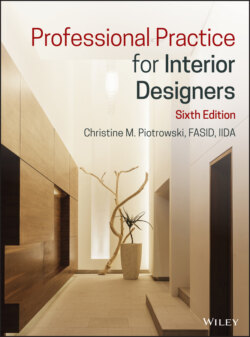Читать книгу Professional Practice for Interior Designers - Christine M. Piotrowski - Страница 156
FOLLOW‐UP
ОглавлениеSo what's next? If you were offered a position and accepted, you might have additional paperwork to complete at the office. More likely this will be done on your first day on the job. You will also likely have some additional questions concerning that first day.
Perhaps you have been offered a position but you have asked for time to consider the offer. It is best if you call the interviewer promptly and follow up with a refusal or acceptance letter. In most situations, the employer is hoping for an immediate response. Depending on the situation, you can ask for 24–48 hours. Waiting longer can be a problem and can indicate to the prospective employer that you are not interested. When you respond within a reasonable time frame, the company knows whether you are interested in the position and, in the case of your refusal, has a letter for the company's records.
You have to be careful to ask for time to decide if you have other interviews scheduled. If you have another interview that day, do not keep one employer dangling to see if someone else might have a better offer. Be sure to consider the offer in front of you carefully, comparing it to your goals, to help you decide whether to accept. A highly qualified designer is likely to get more than one offer or be speaking to more than one firm, and the employers know this. If you are interested, let the person in front of you know that fact, as well as that you are also interviewing with other firms. In all honesty, this is a delicate situation in which there is, unfortunately, no perfect answer.
More likely, you will not receive an offer immediately because the company is also interviewing other people. An important task shortly after the interview is to prepare notes detailing what was talked about, as part of your job search recordkeeping. If an offer was not made or you were rejected, these notes will help you determine and understand what might have gone wrong so that you can correct the errors during future interviews.
If an offer is made and you accept it, a written summary from your perspective is also important. Notes related to salary, benefits, and expected performance levels will be essential in the future to remind you of the agreed‐upon responsibilities on which you will later be evaluated. Many designers now request that offers be put in writing. This writing does not have to be a formal employment contract, as described in Chapter 29, but it should include key points concerning salary, benefits, and work responsibilities.
As soon as reasonable after the interview, prepare some notes on how the interview went. This is naturally very important if you do not get an offer so you can correct any issues in your presentation. But it is also important when you get an offer. Your notes concerning salary and responsibilities are very important, as most interior design jobs do not include a written offer or contract.
Good business etiquette also calls for you to send a thank‐you note or e‐mail to the interviewer immediately after the interview. Considering the number of e‐mails a business owner receives each day, many employers will appreciate a handwritten thank‐you note. A follow‐up phone call is also appropriate in place of a note, especially if the interviewer has so indicated. Thank the interviewer for giving you his or her time; restate your interest in the position, if you are still interested; and follow through with providing any information that you agreed to supply. Figure 6‐5 shows a sample letter with suggested content.
If you have not yet received an offer, this courtesy will indicate to the prospective employer that you are a professional. Even if the firm does not have an opening for you, you will be remembered later. If you are interested in a position with the firm but you know that the firm is still interviewing others, it is necessary to keep the design firm interested in you. Be sure to add something in your note or letter summarizing your qualifications and stating how you can contribute to the company.
FIGURE 6‐5. A sample follow‐up thank‐you letter that would be sent after a job interview.
